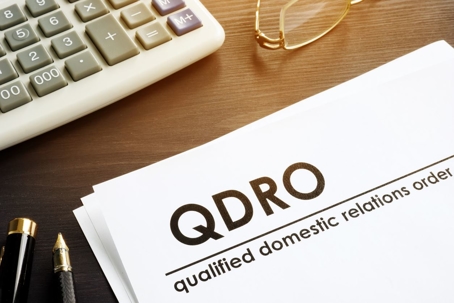How exactly might a divorce impact your retirement plan? This is an important question to ask, and is where a Qualified Domestic Relations Order (QDRO) may enter the picture in your family law matter. A QDRO is a legal document, typically found in a divorce agreement, that recognizes that a spouse, former spouse, child, or other dependent is entitled to receive a predefined portion of the account owner’s retirement plan assets. Here are 5 things you should know about QDRO's:
What Is the First Thing to Know About a QDRO?
In general, under federal law, a person who participates in an employer-sponsored retirement plan is not allowed to assign or transfer any part of that interest to another person. It is intended for the singular use of being available when it comes time for a person to retire. It cannot be used for other purposes, including being sold, gifted, used as collateral for a loan, garnished to pay off debts or forfeited to pay off fines and taxes.
What Is the Second Thing To Know About a QDRO?
There’s one big exception to this federal law. Retirement benefits can be assigned to a spouse, a former spouse, a child or other dependent in order to satisfy spousal support, child support or a marital property distribution ordered in a divorce or other domestic relations proceeding.
In order to make sure that this exception isn’t violated, the assignment can only be done through a very special kind of order that follows very specific rules. This order is called a Qualified Domestic Relations Order (QDRO) and assigns a person the right to receive a portion of the retirement benefits that his or her spouse or former spouse has earned through participation in an employer-sponsored retirement plan.
What Is the Third Thing To Know About a QDRO?
A QDRO is required only for retirement plans sponsored by private employers, such as a company or non-profit. This includes plans such as 401(k) accounts, 403(b) plans, and private employee pension plans. Individual retirement accounts that are not employer sponsored don’t need one. These are generally things like individual retirement accounts (IRAs) and Simplified Employer Pensions (SEPs).
Retirement plans sponsored by the federal government, states, counties and municipalities all have similar but different sets of rules for how they handle the division of retirement plans. Some may use the term “Qualified Domestic Relations Order” and others may not. Retirement plans for federal government employees refer to these court orders as a COAP (Court Order Acceptable for Processing).
What Is the Fourth Thing To Know About a QDRO?
A QDRO differs from a typical domestic relations order in that not only does the judge need to approve and sign the order, it also must be approved by the administrator of the retirement plan. This approval by the plan administer is what turns a regular domestic relations order into a “Qualified Domestic Relations Order”. State courts do not have jurisdiction to determine whether a domestic relations order constitutes a qualified domestic relations order.
What Is the Fifth Thing To Know About a QDRO?
That there are many other things that you need to know about QDROs. And more importantly that if your family law matter might involve dealing with your or your spouse’s employee-sponsored retirement accounts, it is vital that you work with an attorney who is knowledgeable and experienced in working with QDROs who can advise how they work and how they fit into divorce settlements and judgements of dissolution.
If you would like to set up a free consultation with one of our attorneys to discuss a QDRO, you can do so by calling our office today at (503) 227-0200.

